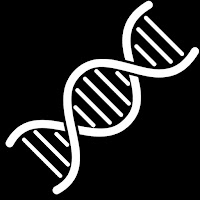 |
| miSHERLOCK, Image Credits: Wyss institute at Harvard University. |
Due to unavailability or shortage of testing kits in some countries, diagnosis of COVID-19 in today's situations is difficult. Simple things that used to be ubiquitous in the hospital, like nasopharyngeal swabs, were suddenly hard to get. So routine sample processing procedures of COVID-19 were disrupted, which is a big problem in an evolving pandemic.
To eliminate these bottlenecks and to provide accurate diagnostics for COVID-19 with less reliance on global supply chains, researchers at the Wyss Institute for Biologically Inspired Engineering at Harvard University, the Massachusetts Institute of Technology, and several Boston-area hospitals, developed a simple, inexpensive and CRISPR-based diagnostic device for detecting multiple variants of the SARS-CoV-2 virus at home. For diagnostic test, it uses just a sample of their saliva. They named this device, Minimally Instrumented SHERLOCK or in simple words miSHERLOCK. It can successfully distinguish between three different variants of SARS-CoV-2. It can be rapidly reconfigured to detect additional variants like Delta. The device can be easily assembled using a 3D printer and commonly available components for about $15, and re-using the hardware brings the cost of individual assays down to $6 each.
How to use miSHERLOCK to test COVID-19?
This device uses a simple procedure to diagnose COVID-19. You just have to spit into it and wait. The whole process occurs in two chambers of the device. These chambers are Sample preparation chamber and Reaction chamber. Steps you have to follow to diagnose COVID-19 in miSHERLOCK are as followed:
- Spits into sample preparation chamber.
- Turns ON the heat.
- Wait for three to six minutes for the saliva to be wicked into the filter.
- Then remove the filter.
- Transfers it to the reaction chamber column.
- Pushes a plunger that deposits the filter into the chamber and punctures a water reservoir to activate the SHERLOCK reaction.
- Fifty-five minutes later, looks through the tinted transilluminator window into the reaction chamber .
- Observe and confirms the presence of a fluorescent signal.
- You can also use an accompanying smartphone app that analyzes the pixels being registered by the smartphone’s camera to provide a clear positive or negative diagnosis.
Benifits of miSHERLOCk:
Co-first author Helena de Puig who is a postdoctoral fellow at the Wyss Institute and MIT said that “miSHERLOCK eliminates the need to transport patient samples to a centralized testing location and greatly simplifies the sample preparation steps, giving patients and doctors a faster, more accurate picture of individual and community health, which is critical during an evolving pandemic,”
“One of the great things about miSHERLOCK is that it’s entirely modular. The device itself is separate from the assays, so you can plug in different assays for the specific sequence of RNA or DNA you’re trying to detect,” said co-first author Devora Najjar, a research assistant at the MIT Media Lab and in the Collins Lab. “Assays for new targets can be created in about two weeks, enabling the rapid development of tests for new variants of COVID-19 and other diseases.”
How miSHERLOCK works?
For the SARS-CoV-2 detection it uses CRISPR-based technology created in the lab of Wyss Core Faculty member and senior paper author Jim Collins, called “specific high sensitivity enzymatic reporter unlocking” (SHERLOCK). SHERLOCK makes use of CRISPR’s “molecular scissors” to snip DNA or RNA at specific locations of virus with an added bonus: this specific type of scissors also cuts other pieces of DNA in the surrounding area, allowing it to be engineered with nucleic acid probe molecules to produce a florescent signal indicating the presence of viral gene in the sample or in simple words, the person is covid positive.
To devlop this device, the researchers followed these criterias,
Use of SHERLOCK reaction in detection of viral gene:
Researchers created a SHERLOCK reaction designed to cut SARS-CoV-2 RNA at a specific region of a gene. This gene is conserved across multiple variants of the virus. There is a molecular scissors used here to cut the gene known as Cas12a enzyme. When this enzyme successfully bind and cut the gene, single-stranded DNA probes are also cut. This results in the production of a fluorescent signal. They also created additional SHERLOCK assays designed to target a panel of viral mutations in Spike protein sequences that represent three SARS-CoV-2 genetic variants: Alpha, Beta, and Gamma.
Selection of sample to diagnose COVID-19:
Next the team focused their efforts on solving a problem that how to make the preparation of sample easy? The team chose to use saliva rather than nasopharyngeal swab samples. The reason was that it is easier for users to collect saliva. Studies also have shown that SARS-CoV-2 is detectable in saliva for a greater number of days post-infection. But there was an obstacle that, unprocessed saliva contains enzymes that degrade various molecules, producing a high rate of false positives. To solve this problem the researchers developed a novel technique. First, they added two chemicals called DTT and EGTA to saliva and then heated the sample to 95°C for 3 minutes. Heating eliminated the false-positive signal from the untreated saliva and sliced open any viral particles. Then they incorporated a porous membrane that was engineered to trap RNA on its surface, which could finally be added directly to the SHERLOCK reaction to generate a result.
Now the miSHERLOCK is ready for real world and to increase the diagnostic test of COVID-19.



